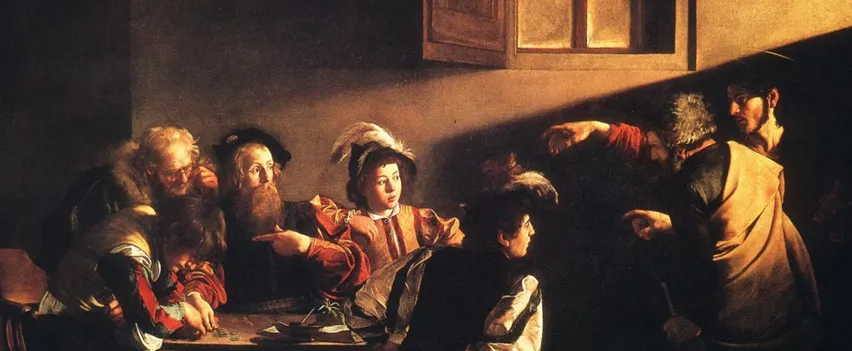De-creation of the Old Covenant World or the Planet?
- Apocalyptic language – “The stars shall fall from heaven” and “heaven and earth will pass away” (Mt. 24:29, 35)
As we pointed out earlier in this series, the “end of the age” (Mt. 24:3) associated with the destruction of the temple Jesus and the disciples are looking at contextually is referring to the end of the old covenant age in AD 70 and not the end of world history. But what are we to make of Matthew 24:29 and Matthew 24:35 – don’t these passages predict the end of world history or the physical transformation of the planet?
The first thing that we need to take note of is that the de-creation language of Matthew 24:29 is associated with the same time frame and events of the tribulation, distress, abomination, desolation, the Roman armies surrounding Jerusalem, wrath upon the Jews and the flight of the Christians from Judea to Pella – in that it says, “immediately after those days…” And the coming of the Son of Man in verse 30 begins with “then,” also connecting all of these events together in the unfolding events of AD 67 – AD 70. There is no gap of thousands of years between these events if we want to be honest with the language and interpret holy Scripture with integrity.
God’s coming on the clouds and stars falling from heaven (de-creation language), as used elsewhere in the Bible, are metaphors or symbolic language referring to in-time historical judgments of nations, obviously not the destruction of the physical planet. This can be seen in such OT passages referring to:
1). the fall of Babylon (cf. Isa. 13) and Egypt (cf. Ezek. 30:2-3).
2). judgments upon Idumea, Bozrah and all the local nations of that time (cf. Isa. 34).
3). a shaking of the then known nations through Darius, king of Persia (cf. Hag. 2:6).
4). historical judgments upon Judah and Israel (cf. Isa. 13:9-10; 19:1; 34:4-5; Ezek. 32:7-8; Amos 5:21-22; Zeph. 1:7, 14; Zech. 14:1; Psalm 18; Psalm 104; Hab. 1:2ff.).
Did God come on a literal cloud when He judged Egypt by means of the Assyrians in 670 BC?
- “Behold, the LORD rideth upon a swift cloud, and shall come into Egypt” (Isa. 19:1).
Was the literal heaven “dissolved” and rolled back like a scroll and did literal stars fall down from heaven to earth when national Idumea (or Edom) was judged by God in the OT?
- “And all the host of heaven shall be dissolved, and the heavens shall be rolled together as a scroll: and all their host shall fall down, as the leaf falleth off from the vine, and as a falling fig from the fig tree. For my sword shall be bathed in heaven: behold, it shall come down upon Idumea, and upon the people of my curse, to judgment” (Isa. 34:4-5).
Another striking passage is found in Jeremiah 4 concerning the judgment of Jerusalem in 586 BC:
- “I looked at the earth/land, and it was formless and empty; and at the heavens, and their light was gone. I looked at the mountains, and they were quaking; all the hills were swaying. I looked, and there were no people; every bird in the sky had flown away. I looked, and the fruitful land was a desert; all its towns lay in ruins before the Lord, before his fierce anger. This is what the Lord says: “The whole land will be ruined, though I will not destroy it completely. Therefore, the earth will mourn and the heavens above grow dark, because I have spoken and will not relent, I have decided and will not turn back.” At the sound of horsemen and archers every town takes to flight. Some go into the thickets; some climb up among the rocks. All the towns are deserted; no one lives in them. What are you doing, O devastated one? Why dress yourself in scarlet and put on jewels of gold? Why shade your eyes with paint? You adorn yourself in vain. Your lovers despise you; they seek your life. I hear a cry as of a woman in labor, a groan as of one bearing her first child— the cry of the Daughter of Zion gasping for breath, stretching out her hands and saying, “Alas! I am fainting; my life is given over to murderers” (Jer. 4:23-31).
Jeremiah is reaching back into Genesis 1-2 and applying that language to the de-creation of Jerusalem (as John will do in Rev. 21-22). As we pointed out before, old covenant Israel understood her land and covenant to be a “heaven” and “earth,” and here they are being desolated through an in-time local judgment that sounds as if it is the destruction of the globe and/or the end of world history.
Most Evangelical Zionists are clueless that for centuries older and modern commentaries described the de-creation language and coming of Christ in Matthew 24/Luke 21/Mark 13 as common apocalyptic language that was fulfilled in the events of AD 67 – AD 70. John Bray’s book, Matthew 24 Fulfilled, offers the most documentation of Christian commentators (past and present) that I know of. I will offer just a few examples. Bray quotes N. Nisbett on the de-creation language of Matthew 24:29:
“[T]his language was borrowed from the ancient hieroglyphics: for as in hieroglyphic writing, the sun, moon, and stars were used to represent states and empires, kings, queens, and nobility; their eclipse and extinction, temporary disasters or overthrow, & so in like manner, the holy prophets call kings and empires by names of the heavenly luminaries; their misfortunes and overthrow are represented by eclipses and extinction; stars falling from the firmament are employed to denote the destruction of the nobility, & (Warburton’s Divine Legation, vol. 2, book 4, section 4, quoted by N. Nisbett, Our Lord’s Prophecies of the Destruction of Jerusalem, 22-23).”[1]
Adam Clarke, after addressing the historical judgments and apocalyptic language of Isaiah 13:9-10; Ezek. 32:7-8, goes on to address:
“The destruction of the Jews by Antiochus Epiphanes is represented by casting down some of the host of heaven, and the stars to the ground. See Dan. Viii. 10. And this very destruction of Jerusalem is represented by the Prophet Joel, chap ii. 30, 31 by showing wonders in heaven and in earth—darkening the sun, and turning the moon into blood. This general mode of describing these judgments leaves no room to doubt the propriety of its application in the present case (Adam Clarke, commentary on Matthew 24:29).”[2]
As we have seen, the context in Matthew 23-24 is the fall of Jerusalem and the destruction of the temple. The sun, moon, and stars represented the universe of Israel and her rulers which would fall from her covenantal significance by AD 70 for rejecting Christ and His apostles and prophets (cf. Matthew 23:31-36).
Reformed and Puritan theologian John Owen had this to say of the de-creation language in Matthew 24:29:
“And hence it is, that when mention is made of the destruction of a state and government, it is in that language that seems to set forth the end of the world. So, Isa. 34:4; which is yet but the destruction of the state of Edom. And our Saviour Christ’s prediction of the destruction of Jerusalem, Matthew 24, he sets it out by expressions of the same importance. It is evident then, that, in the prophetical idiom and manner of speech, by ‘heavens’ and ‘earth’, the civil and religious state and combination of men in the world, and the men of them, are often understood.”[3]
John L. Bray correctly writes of the stars falling from the heavens in Matthew 24:29:
“Jewish writers understood the light to mean the law; the moon, the Sanhedrin; and the stars, the Rabbis.”[4]
- “Heaven and earth will pass away” (Mt. 24:35)
So far, we have found contextual and grammatical reasons to interpret the “end of the age” as the old covenant age (v. 3), the stars falling from the heavens in vs. 29 to be the religious and civil rulers falling from the places of power (within that old covenant age) when Jerusalem and her temple was destroyed in AD 70, but what of verse 35 which addresses the “heaven and earth” passing away? Surely that is referring to the end of planet earth, right? Once again, we must follow a contextual, grammatical and historical hermeneutic that is within the Christian church to help understand that this kind of language can also be referring to the old covenant heavens and earth and its temple.
While not a Preterist, G.K. Beale’s research indicates “…that ‘heaven and earth’ in the Old Testament may sometimes be a way of referring to Jerusalem or its temple, for which ‘Jerusalem’ is a metonymy.”[5]
Reformed theologian John Brown, in identifying the passing of “heaven and earth” in Matthew 5:18, writes:
“But a person at all familiar with the phraseology of the Old Testament Scriptures, knows that the dissolution of the Mosaic economy, and the establishment of the Christian, is often spoken of as the removing of the old earth and heavens, and the creation of a new earth and new heavens.”[6]
Commentators are correct to identify the “heaven and earth” (of Matthew 5:18) as the “heaven and earth” (of Matthew 24:35), but the context of both point us to the old covenant system passing away and not the planet earth. According to Jesus’ teaching in Matthew 5:17-18, if heaven and earth (and all OT prophecy) have not passed away (or been fulfilled), then we are currently under all of the “jots and tittles” of the old covenant Law of Moses.
And now, specifically of the passing of heaven and earth here in our text, Evangelical Crispin H.T. Fletcher-Louis makes the following comments on Mark 13:31/Matthew 24:35:
“The temple was far more than the point at which heaven and earth met. Rather, it was thought to correspond to, represent, or, in some sense, to be ‘heaven and earth’ in its totality.” “. . . [T]he principal reference of “heaven and earth” is the temple centered cosmology of second-temple Judaism which included the belief that the temple is heaven and earth in microcosm. Mark 13[:31] and Matthew 5:18 refer then to the destruction of the temple as a passing away of an old cosmology.”[7]
Indeed, the temple was set forth as a creation of heaven and earth:
| Day | Creation | Tabernacle |
| Day 1 | Heavens are stretched out like a curtain (Ps. 104:2) | Tent (Exod.26:7) |
| Day 2 | Firmament (Gen. 1:2) | Temple veil (Exod.26:33) |
| Day 3 | Waters below firmament | Laver or bronze sea (Exod. 30:18) |
| Day 4 | Lights (Gen.1:14) | Light stand (Exod. 25:31) |
| Day 5 | Birds (Gen. 1:20) | Winged cherubim (Exod. 25:20) |
| Day 6 | Man (Gen. 1:27) | Aaron the high priest (Exod. 28:1) |
| Day 7 | Cessation (Gen. 2:1) Blessing (Gen. 2:3) Completion (Gen.2:2) | Cessation (Exod. 39:32) Mosaic blessing (Exod. 39:43 Completion (Exod. 39:43)[8] |
Neither Jesus nor any NT writer ever predicted the end of the planet earth or world history as is simply assumed by so many here in Matthew 24:3, 29, 35 and elsewhere in the NT.
When we take a combined look at some of the best theologians within the Reformed and Evangelical communities, we find a Full Preterist interpretation of virtually every eschatological de-creation prophecy in the Bible. Combined, John Owen, John Locke, John Lightfoot, John Brown, R.C. Sproul, Gary DeMar, Kenneth Gentry, James Jordan, Peter Leithart, Keith Mathison, Crispin H.T. Fletcher-Louis, Hank Hanegraaff, and N.T. Wright (to name just a few) teach that the passing away of heaven and earth (cf. Matt. 5:17–18; 24:3, 29, 35; 1 Cor. 7:31; II Peter 3; I Jn. 2:17–18; Rev. 21:1) refers to the destruction of the temple or to the civil and religious worlds of men—either Jews or Gentiles; and that the rulers of the old covenant system or world, along with the temple, were the “sun, moon, and stars,” which made up the “heaven and earth” of the world that perished in AD 70. See the following works:
John Owen, The Works of John Owen, 16 vols. (London: The Banner of Truth Trust, 1965–68), 9:134–135. John Lightfoot, Commentary on the New Testament from the Talmud and Hebraica: Matthew – 1 Corinthians, 4 vols. (Peabody, MA: Hendrickson Publishers, [1859], 1989), 3:452, 454. John Brown, Discourses and Sayings of our Lord, 3 vols. (Edinburgh: The Banner of Truth Trust, [1852] 1990), 1:170. John Locke, The Clarendon Edition of the Works of John Locke: A Paraphrase and Notes on the Epistles of St Paul Volume 2, (NY: Oxford University Press, 1987), 617–618. R.C. Sproul, The Last Days According to Jesus (Grand Rapids, MI: Baker Books, 1998). Kenneth Gentry, He Shall Have Dominion (Tyler TX: Institute for Christian Economics, 1992), 363–365. Kenneth Gentry (contributing author), Four Views on the Book of Revelation (Grand Rapids, Michigan: Zondervan, 1998), 89. Gary DeMar, Last Days Madness: Obsession of the Modern Church (Powder Springs: GA, 1999), 68–74, 141–154, 191–192. James B. Jordan, Through New Eyes Developing a Biblical View of the World (Brentwood, TN: Wolgemuth & Hyatt, Publishers, 1998), 269–279. Crispin H.T. Fletcher-Louis (contributing author) Eschatology in Bible & Theology (Downers Grove, Illinois: Inter Varsity Press, 1997), 145–169. Peter J. Leithart, The Promise of His Appearing: An Exposition of Second Peter (Moscow, ID: Canon Press, 2004). Keith A. Mathison, Postmillennialism: An Eschatology of Hope (Phillipsburg, NJ: P&R Publishing, 1999), 114, 157–158. N.T. Wright, Jesus and the Victory of God (Minneapolis, MN: Fortress Press, 1996), 345–346. N.T. Wright, The Resurrection of the Son of God (Minneapolis, MN: Fortress Press, 2003), 645, n.42. Hank Hanegraaff, The Apocalypse Code (Nashville, TN: Thomas Nelson Publishers, 2007), 84–86.
These interpretations are, individually considered, “orthodox.” Yet when Full Preterists consolidate the most defensible elements of Reformed and Evangelical eschatology, anti-Preterists unite in opposition to even some of their own stated views.
Concluding Part 6
Since Jesus places “all” of the events listed in Matthew 24:1-34 to take place in His contemporary “this generation,” we have allowed the Bible to interpret itself and have found sound exegetical support that the “end of the age,” “stars falling,” and “heaven and earth passing away” to refer to the old covenant world and not the end of world history or the physical transformation of the planet. In part 7 we look more at the coming of the Son of Man as the sun shining from the east to the west and upon the clouds was also fulfilled in Jesus’ contemporary generation.
[1] Bray, Ibid., 136
[2] Ibid. 137
[3] Owen, Ibid., 134
[4] Bray, Ibid., 125
[5] G.K. Beale, The Temple and the Church’s Mission A biblical theology of the dwelling place of God, (Downers Grove, Illinois: Inter Varsity Press, 2004), 25
[6] John Brown, Discourses and Sayings of Our Lord (Edinburg: The Banner of Truth Trust, 1990 [1852]), 1:170
[7] Crispin H.T. Fletcher-Louis a contributing author in, ESCHATOLOGY in Bible & Theology Evangelical Essays at the Dawn of a New Millennium, (Downers Grove, Illinois: Inter Varsity Press, 1997), 157
[8] See also, J.V. Fesko, Last things first Unlocking Genesis 1-3 with the Christ of Eschatology, (Scotland, UK, 2007), 70.





